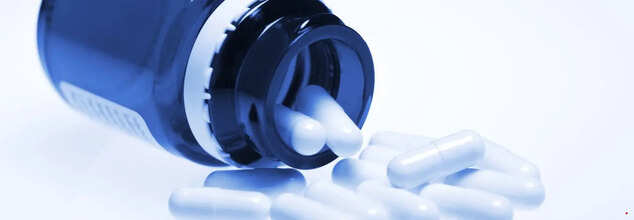- Health Conditions A-Z
- Health & Wellness
- Nutrition
- Fitness
- Health News
- Ayurveda
- Videos
- Medicine A-Z
- Parenting
- Web Stories
Does Sun Make You Age Faster?

Credits: Canva
A new study by researchers at the University of Southern California (USC) has found that living in areas with long periods of extreme heat could be quietly speeding up how our bodies age — not on the outside, but at the cellular level. This means the heat may be increasing the risk of chronic illnesses and early physical decline without people even noticing.
The Hidden Risk in Warm Retirement States
Over the past few years, many older Americans have moved to sunny states like Florida, Texas, and North Carolina for their pleasant weather and low taxes. But these so-called “retirement havens” are also some of the hottest parts of the U.S. — and that’s where the danger lies.
Dr. Eun Young Choi and her team studied data from 3,686 people aged 56 and older between 2010 and 2016. They discovered that the more days people were exposed to extreme heat, the faster their biological age increased. The results were published in the journal Science Advances.
What Is Biological Aging?
Biological aging is not the same as the number of years you’ve lived. It’s about how old your body feels and functions at the cellular level. This can tell us how vulnerable someone might be to diseases or health problems. For example, two 60-year-olds may be the same age on paper, but the one with more heat exposure may have a body that behaves like it's 63.
How the Study Measured Aging
The USC researchers used three high-tech “aging clocks” to track the body’s internal changes:
- PCPhenoAge predicts health problems in the future.
- PCGrimAge estimates risk of death.
- DunedinPACE tracks how quickly the body is aging.
Their analysis showed that people exposed to more than 140 days of extreme heat in a year had biological ages up to 14 months older than their actual age. Over six years, those living in hot zones saw their biological age increase by nearly 3 years.
Why This Matters
“Heat exposure isn’t just about feeling uncomfortable or getting sunburned,” said Dr. Choi to Daily Mail. “It puts long-term stress on the body, which can lead to serious health problems.” Previous studies have already linked faster biological aging with a higher risk of heart disease, diabetes, memory loss, and even early death.
States like Louisiana, Mississippi, Texas, Alabama, and Arkansas were among the worst hit. In some places, people lived in “danger-level” temperatures — over 103°F — for years.
Cooling Access Makes a Difference
Dr. Choi pointed out that not everyone in a hot state is equally at risk. Things like having air conditioning, access to cooling centers, or whether someone works outdoors can make a big difference — even between two people living on the same street.
Is Any Heat Good?
Interestingly, not all heat is harmful. “Short bursts of heat, like saunas or hot showers, may actually help circulation and heart health,” Dr. Choi said. But for everyday life, especially for older adults or people with health conditions, staying cool and hydrated is key.
The takeaway? As climate change makes heat waves more common, protecting our bodies from constant high temperatures could be just as important as eating healthy or quitting smoking.
US FDA Approves 3 Natural Food Dyes—Everything That We Should Know

Credit: Canva
The US Food and Drug Administration (FDA) has approved three natural food dyes in an attempt to phase out synthetic dyes from foods across America. The list includes galdiera extract blue, butterfly tea flower extract and calcium phosphate. "FDA staff have been moving quickly to expedite the publication of these decisions, underscoring our serious intent to transition away from petroleum-based dyes in the food supply and provide new colours from natural sources," FDA commissioner Dr Martin Makary said in a statement.
Several high-profile brands, including Pepsico and Tyson Foods, have announced synthetic dye removal plans from their products in recent weeks.
What Do We Know About The Approved Natural Dyes?
Galdiera Extract Blue
Galdiera extract blue, derived from the cyanobacteria Galdieria sulphuraria, is primarily used in the food and beverage industry as a natural blue colouring agent. It is a plant-based, nutrient-rich pigment that is considered a safer and more sustainable alternative to synthetic dyes. Additionally, it is utilised in nutraceuticals and cosmetics for its antioxidant properties and vivid hue, making it a versatile ingredient in health-focused and eco-friendly products.
Butterfly Pea Flower Extract
Butterfly pea flower extract, obtained from the petals of the Clitoria ternatea plant, is widely used as a natural colourant in foods, beverages, and herbal teas. Known for its vibrant blue hue that changes to purple when acidic substances are added, it is also rich in antioxidants and has gained popularity in skincare products for its purported anti-ageing and anti-inflammatory benefits. Additionally, it is used in traditional medicine to enhance cognitive function and reduce stress.
Calcium Phosphate
Calcium phosphate is a common mineral compound extensively used in the food, pharmaceutical, and dental care industries. In foods, it functions as a nutritional supplement, stabiliser, and leavening agent, while in pharmaceuticals, it is used in calcium supplements and antacids. In dental care, it is a key component in toothpaste and dental fillings to help remineralize enamel and prevent tooth decay.
Calls For Complete Elimination Of Synthetic Dyes
Public health advocates have called for the complete elimination of certain synthetic dyes in foods, citing scientific research linking consumption of dyes to diseases and neurological issues like hyperactivity and behavioural problems. Moreover, there is a social reason also behind this boycott, with advocates stating that bright colours make unhealthy food look attractive to children. FDA Commissioner Dr Marty Makary stated that American children have long been "living in a toxic soup of synthetic chemicals" and stressed the importance of cleaner food labels.Here is a list of food dyes that are banned by US health authorities
The health authorities in the US are banning at least six food dyes by the end of this year. The list incorporates FD&C Green No. 3, FD&C Red No. 40, FD&C Yellow No. 5, FD&C Yellow No. 6, FD&C Blue No. 1, and FD&C Blue No. 2, according to a press release by the FDA.
Can Nootropics Get You An Extra Edge At Work?

Credit: Canva
A new wave of cognitive enhancers known as nootropics is gaining popularity, with products like Thesis being marketed as 'Nature’s Adderall.' The word itself is derived from ancient Greek, combining noos ( mind) and tropen ( turning, bending or tending towards). So how exactly does it boost cognition, and how does it impact a person's overall functioning?
'Smart Drugs'
Nootropics, also referred to as smart drugs, are substances that are said to enhance cognitive functions such as memory, learning, and concentration. Unlike stimulants that act directly on neurotransmitters, nootropics improve the brain's supply of glucose and oxygen, protect neural tissues from neurotoxicity, and promote blood flow to the brain.
The term 'nootropic' was first coined in the early 1970s by Cornelius E. Giurgea to describe substances that activate cognitive functions, particularly memory and learning, especially in cases where these functions are compromised. Instead of acting as receptor ligands or neurotransmitter releasers, nootropics work by influencing neuronal metabolism in the central nervous system.
A review published in the National Library of Medicine classifies nootropics into four subgroups: classical nootropic compounds, substances that increase brain metabolism, cholinergics, and plant-based extracts with nootropic effects. These groups highlight the varied ways in which nootropics can impact brain health.
Natural Nootropic
One such natural nootropic gaining attention is Kanna, a South African plant said to produce empathogenic effects — substances that create warm, euphoric feelings similar to those induced by ecstasy. "There are over 35 known alkaloids in Kanna, which have various physiological effects on the body," says Stephanie Wang, founder and CEO of KA! Empathogenics. "These alkaloids not only elevate mood and promote feelings of well-being but also enhance cognitive abilities and support brain health."Medicinal Use Of Nootropics
In addition to natural supplements like Kanna, nootropics are also being studied for their potential use in treating acute psychoorganic syndrome (POS), a condition associated with early brain damage that manifests as memory loss, mental retardation, and changes in consciousness. POS can be triggered by brain trauma, infections, stroke, or toxic exposure to substances like alcohol or drugs.
While POS is generally considered reversible, it can sometimes progress to dementia, particularly in severe cases. Nootropics are also used for chronic cognitive impairments such as memory loss, age-related mental decline, and attention deficits caused by fatigue or exhaustion. Children with minimal brain dysfunction syndrome and patients with encephalopathy have also been prescribed nootropics in some cases.
Despite their rising popularity, experts remain cautious about the effectiveness of nootropics in treating severe cognitive impairments. While they show promise in mild cases, their impact on advanced dementia remains unclear. Furthermore, the long-term effects of these cognitive enhancers are still under investigation, raising questions about their safety and efficacy as a widespread solution for brain health.
ALSO READ: Is There A Right Way To Absorb Vitamin D From Sun?
Joe Biden Diagnosed With Nodule In Prostate Gland

Credit: Canva
A small nodule was found in the prostate gland of former US President Joe Biden during a recent physical exam, as per media reports. While not much has been revealed about his medical evaluation, a spokesperson said that the discovery of the nodule "necessitated further evaluation." This comes as British monarch King Charles is already undergoing treatment for an enlarged prostate gland since February last year. Earlier this week, Former Deputy PM of Australia and Nationals MP Barnaby Joyce said that he has been diagnosed with prostate cancer.
While it is quite common for men over the age of 50 to experience prostate problems, the 82-year-old has had a history of medical issues. During his presidency, he had a "cancerous" skin lesion removed from his chest. The White House, in a statement, said that in February 2023, the skin tissue was removed. It was sent for a biopsy, which revealed it to be cancerous.
How To Identify Prostate Cancer?
Prostate cancer is a type of cancer that occurs when malignant cells form in the prostate gland, which is a walnut-sized gland in the male reproductive system. Prostate cancer treatment guidelines have shifted their path a bit in recent years, with many men opting for active surveillance rather than immediate treatment for slow-growing tumours. However, about 50% of men on "watchful waiting" will require further treatment within 5 years because of the tumour progression. This is what triggered many researchers to aim and identify whether dietary modifications, specifically increasing omega-3 fatty acids, could prolong this surveillance period and slow down the tumour progression.
Prostate cancer that's more advanced may cause signs and symptoms such as:
- Trouble urinating
- Decreased force in the stream of urine
- Blood in the urine
- Blood in the semen
- Bone pain
- Losing weight without trying
- Erectile dysfunction
Not All Prostate Issues Are Indicative Of Cancer
Not all prostate problems are indicative of cancer. While prostate cancer is a serious concern, there are other conditions that can cause similar symptoms but are non-cancerous. One common condition is benign prostatic hyperplasia (BPH). Experts state that nearly every individual with a prostate will experience BPH as they age. It leads to the enlargement of the prostate gland but does not increase the risk of cancer. Another condition is prostatitis, which primarily affects men under 50. It is characterized by inflammation and swelling of the prostate, often due to bacterial infections. Early diagnosis can help manage these conditions effectively.
© 2024 Bennett, Coleman & Company Limited

